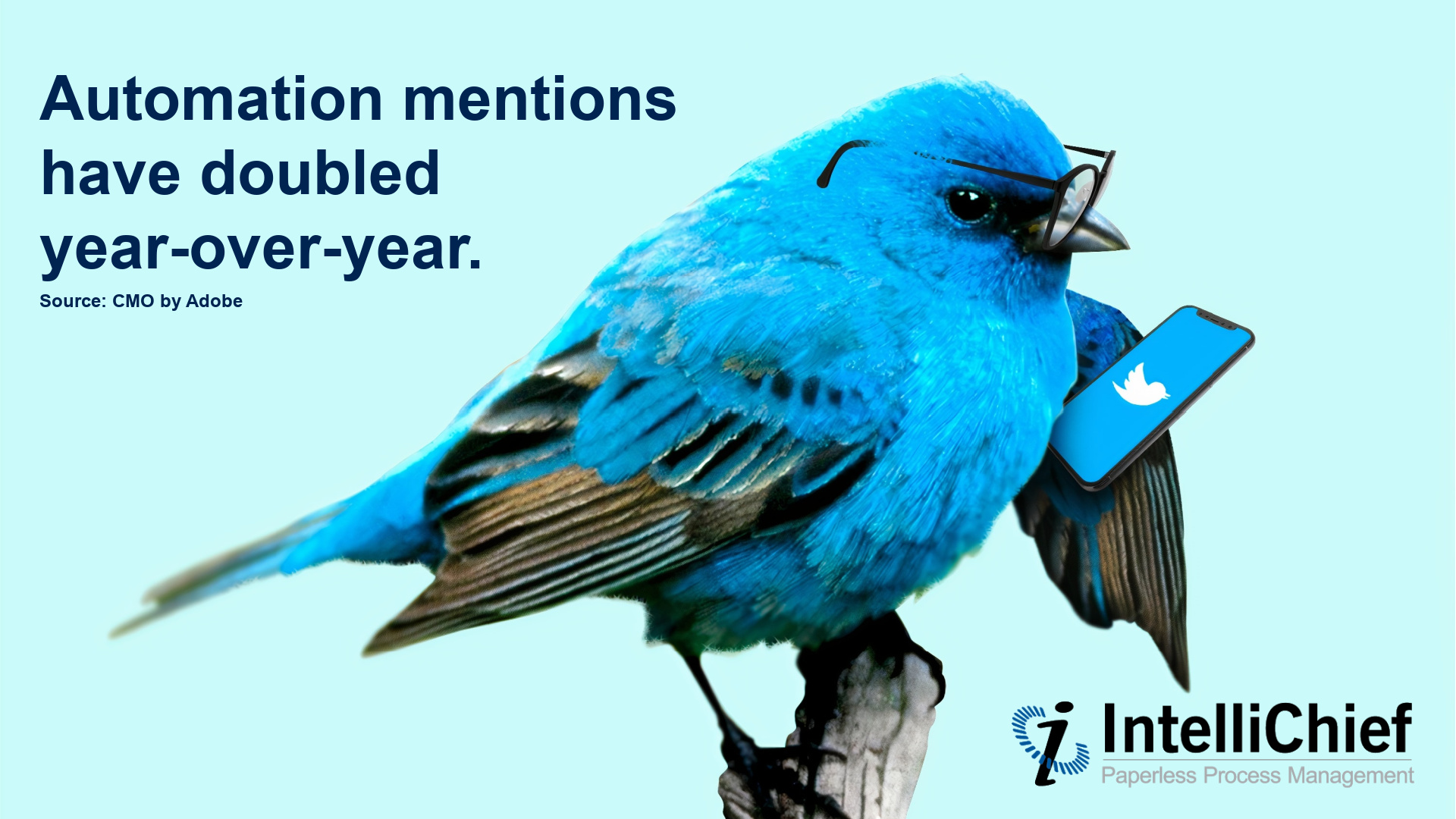Overcoming Paper-Based Customer Service Challenges
Businesses need customers to survive. No matter how good your product is, if you can’t serve your customers’ needs in an efficient manner, there’s no guarantee that they will remain loyal to your business. All it takes is ONE small mistake or slip-up to turn a 5-star customer into a 1-star review.
High-quality Customer Service is determined by a number of factors, but speed is paramount if you want to keep customers satisfied. Even the most gracious and eloquent apology can’t make up for slow response times when your customers come calling. Your Customer Service team needs to be quick on their feet, and that’s impossible if your business still relies on paper-based Customer Service processes that leave your customers on hold listening to a repetitive tune while they shuffle through a cluttered file cabinet for information. Even companies that have already started implementing digital solutions to enhance Customer Service will find themselves at a disadvantage when compared to companies that have automated Customer Service capabilities. Do you know where your company stands?
Welcome to Your Paperless Office
If you want to overcome the paper-based Customer Service challenges that plague most businesses, you will need to focus on the following two objectives:
Digitizing Your Customer Service Documents
Paper-based Customer Service challenges stem from the physical limitations of paper. Paper takes up space and must be moved manually to transfer information from one person or department to the next. As a result, paper-based Customer Service processes are tedious, time-consuming, and ripe for error. By digitizing your documents, you can create precise digital replicas that allow you to store and retrieve documents instantaneously from a computer, tablet, or even mobile phone if you want to expand your Customer Service team to incorporate remote work. OCR software is the technology used to capture documents and import them into a Document Management system. Advanced OCR software can even recognize the numbers and characters on a document and use them to perform automated tasks, which should be your second goal if you want to overcome the challenges of paper-based Customer Service.
Digitize all of your Customer Service documents, including:
- Product Literature
- Orders
- Invoices
- Shipping Documents
- Return Documents
- Manuals
- Parts Lists
- Maintenance Histories
- Customer Correspondence
- RFPs
- RFQs
- Quotes
Automating Your Customer Service Processes
OCR software will help you digitize your documents, allowing you to finally get rid of those filing cabinets that take up valuable real estate in your office. Furthermore, a paperless office will never require additional offsite storage to accommodate paper loads, which means no more spending exorbitant amounts of capital on storage that yields no tangible return for your organization. However, this is only the beginning. If you want to truly eliminate all of the inefficiencies that result in Customer Service slowdowns, digitizing your Customer Service documents should be followed with Business Process Automation. By automating your Customer Service processes, you can serve customers faster and more efficiently while focusing your human capital on improving customer relations and tackling nuanced problems that require a human touch.
Customer Service Touchpoints Give You a Chance to Improve Customer Retention
While the statistics quoted by industry analysts vary, it is generally accepted that it costs as much as 10 times more to win a new customer than to keep an existing one. Expanding your customer base is crucial, but not at the expense of your existing customers. Winning customers and, more importantly, keeping them, are critical business requirements. But what keeps customers loyal? Price, quality, availability, relationships, and inertia all play a part, but Customer Service is the touchpoint where your business and your customers meet. It’s a make-or-break environment where great service is your only option if you want to maintain positive sentiment.
It’s no secret that customers respond favorably to good service. In fact, it affects their purchase decisions. According to Accenture, poor customer service has, at one point, caused nearly half of all U.S. consumers to switch at least one of their service providers. To add insult to injury, recent reports suggest that Customer Service expectations are rising at a faster rate than companies can (or are willing) to adapt to. In a separate survey by Accenture, which canvassed 1,200 technology consumers in North America, Europe, and Asia. It was revealed that consumer technology companies that offer average – not poor, just average – Customer Service alienated consumers and risked losing almost three-quarters of their customers to competitors. The results are clear. Customer service is critical to customer loyalty and company profitability. It can’t be viewed as a cost, but it should be viewed as a prudent investment.
Paper-Based Customer Service Challenges
One important difference between Customer Service and other areas of your business is that resolving customer issues often requires access to information that is spread across multiple departments.
Consider, for example, a standard Customer Service call:
- A customer telephones to complain that they did not receive everything they ordered.
- To ensure that the customer did, in fact, order everything they recall ordering, the CSR first examines the original order document that is likely located in a filing cabinet in the sales office.
- If the items and quantities match, the CSR then has to verify that none of the requested items are on backorder by referring to a copy of the packing slip that is filed away in the warehouse.
- If that doesn’t resolve the issue, the CSR must then review the shipping documents to see if everything was shipped in one box or in
multiple boxes. - If there were multiple boxes, the CSR has to verify that they all made it onto the truck and were delivered.
- Depending on the company’s shipping policies, the boxes may have been delivered by the company’s own truck or by one owned by a third-party shipping company.
- Finally, the CSR is ready to assist the customer — except wait, the customer has moved on.
Most Customer Service interactions aren’t this tedious, but this example does serve to show how the dispersal of information across an organization can send your CSRs into a tailspin. When some or all of this information exists on paper, providing high-quality Customer Service becomes a costly and oftentimes futile endeavor.
The Financial (and Operational) Costs of Paper
The following are among the characteristics and costs of paper that hinder your CSRs:
- Paper is costly to store, handle, copy, and distribute. On the enterprise level, warehouses may be required to store the paper required to resolve customer issues. That paper has to be manually filed when it comes in (or is created) and then retrieved when needed. For collaborative purposes, the necessary documents may need to be photocopied at a cost of several cents per page in addition to the related labor costs.
- Paper storage leads to human error. In physical storage environments, documents may be misfiled or accidentally destroyed, resulting in hours spent hunting them down or trying to recreate lost information. This is not a trivial cost. Research from Price Waterhouse Coopers suggests that the average cost to search for a misfiled document is $120. In the meantime, increasingly frustrated customers are kept on hold awaiting an answer to their questions.
- Paper is difficult to backup or recreate. Fires, floods, vandalism, there are countless ways for a paper document to become lost, damaged, or destroyed. Most companies lack a true disaster recovery plan, so it’s not until the unexpected occurs that they understand the danger of paper documents. If the only copies of valuable customer information are destroyed, it would be impossible to serve customers, and other ongoing operations may also be obstructed. In addition, failing to adequately protect customer and transactional data against such destruction, accidental or not, may place your company in breach of a number of regulations.
- Paper can’t meet customer expectations. A shift in customer expectations over the years has further increased the drawbacks of using paper to support customer service. Web-based technologies have resulted in a greater expectation for rapid CSR responses from vendors. Customers no longer readily accept “I’ll have to put you on hold” or “I’ll have to call you back” when they call with a question. Yet that is exactly what they hear when a CSR has to track down information that exists only on paper.
- Paper doesn’t support self-serve options. Customers today often expect, and industry economics frequently demand, new alternatives for customer service, including 24/7 self-serve support options. Paper-based information makes it impossible to offer this level of convenience. Plus, by refusing to offer self-serve options, you are funneling all support requests directly to a Customer Service department that is already overwhelmed by a lack of digitization and automation.
Say Goodbye to Paper-Based Customer Service Challenges
Despite the predictions a decade or two ago that we would by now be enjoying the benefits of paperless offices, most businesses are still dependent on paper because going paperless requires help — and good help is hard to find. If your organization, like many organizations, is still buried under mountains of paper, it will affect every corner of your business, from Accounts Payable to Human Resources and, of course, Customer Service. Once a paperless office has been established, automating customer service functions and offering Web-based self-serve options becomes simple. You can speed-up customer interactions and add value to those interactions while lowering their costs.











